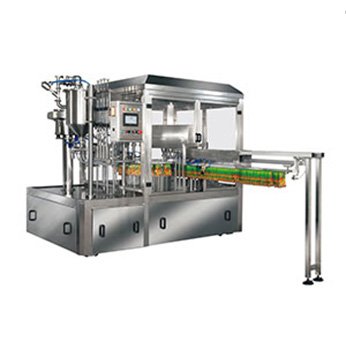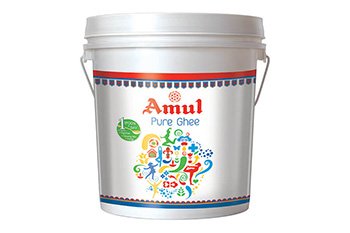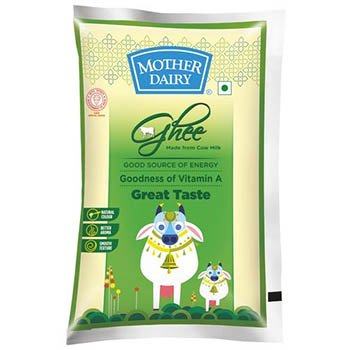If you’ve ever lost your ghee to failed packaging or you don’t want to, you need to understand the essentials of ghee packaging. Certain properties make ghee hard to pack, but it’s not impossible. The key lies in choosing the ideal packaging for your product and acquiring the right equipment to deliver on that.
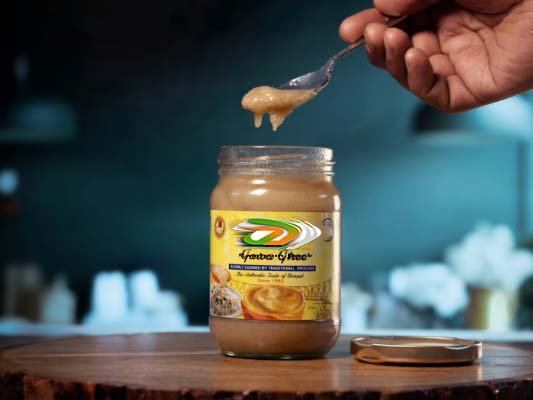
The good news is we’ve done all the deep research for you; continue reading this article to discover which material is best suited for your ghee package and the right machines to use.
What Makes Ghee Hard to Pack?
Ghee is a type of clarified butter that originated in India but is used widely across South Asian and Middle Eastern cultures. It’s made by simmering unsalted butter, removing water and milk solids to produce a pure butterfat product with a rich, nutty flavor and high smoke point.
There are various reasons why this unique ingredient may prove difficult to package:
- Ghee changes state as it can be liquid when warm and solid when cool, so packaging machines must handle both states smoothly.
- Exposure to light and air can make the ghee rancid, so packaging must block these.
- As with all food products, ghee needs clean, food-safe containers to avoid contamination and ensure quality.
- This distinct ingredient has a strong aroma, so you need to pick a packaging material that retains this but keeps unwanted smells out.
These are just some factors that make ghee hard to package, but once you nail it, your customers’ trust and loyalty will deepen.
How Ghee is Packed: The Step-by-Step Process
Step 1: Preparing the Ghee
The first step involves the ghee itself. After the butter has been clarified and the water and milk solids separated, the ghee is left to cool to a suitable temperature for packaging. Very hot ghee can damage some packaging materials or even result in condensation issues. The ghee should be cool enough to handle but warm enough to flow effectively in your ghee-filling machine. This will prevent premature solidification in your machinery.
Step 2: Cleaning the Containers
Thoroughly cleaning the containers ensures the safety and longevity of your product. The packaging container, whether glass, tin, jars, plastic, etc., undergoes a thorough washing process, often with hot water and food-grade sanitizers. They are then rinsed and dried to prevent any moisture from contaminating the ghee. Some advanced facilities might use air-blowing systems or UV sterilization for an extra layer of hygiene.
Step 3: Filling the Ghee
This step is typically done using automated or semi-automated filling machines.
- Volumetric fillers: They dispense a precise volume of ghee into each container.
- Weight fillers: The machines fill based on a preset weight of ghee. This process is carefully controlled to minimize air incorporation, which can lead to oxidation and spoilage.
Step 4: Sealing the Container
Immediately after filling, the containers are sealed airtight. The type of seal used depends on the packaging material.
- Glass Jars: Metal or plastic caps that may have an induction seal (a foil seal adhered to the rim by electromagnetic induction) for tamper evidence and extended shelf life.
- Tin Cans: Sealed by crimping the lid onto the can.
- Plastic Tubs: Sealed with heat-sealed films or snap-on lids, often with an inner peel-off seal.
Step 5: Labeling and adding codes
This is where essential information is added to the packaging. Elements like product code, brand logo, nutritional information, etc.
Step 6: Final Packaging
The individual ghee containers are then grouped and prepared for shipping and distribution. This final process may include cartoning, shrink-wrapping, palletizing, and wrapping.
Choosing the Best Materials for Packing Ghee
Before your product goes through the steps outlined above, you need to choose the best packaging material. Your choice will depend on your production scale, brand perception, and your audience’s desires. Here are some of the most effective packaging materials for ghee:
Before your product goes through the steps outlined above, you need to choose the best packaging material. Your choice will depend on your production scale, brand perception, and your audience’s desires. Here are some of the most effective packaging materials for ghee:
Tin Cans
Here, the ghee is packaged into a tin container. Tin is a favorable material due to its protective qualities against light, oxygen, and moisture. However, the material is prone to rust and is lined with food-grade lacquer to prevent this. Tin cans are best used for large quantities of ghee for long-term storage.
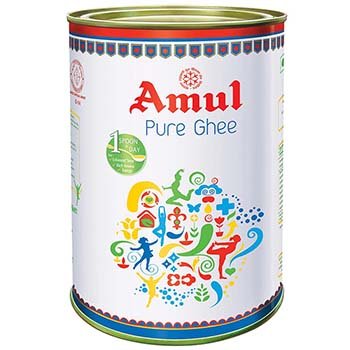
Glass Jars
Glass jars are widely used in ghee packaging due to their premium and traditional feel, particularly beneficial to a rtisanal and premium brands. Glass is a sustainable packaging material that is easily recycled, and it has no interactions with the product. It also allows consumers to see the ghee’s color inside. However, ghee is degraded on exposure to light through the transparent walls of the glass jar. This can affect its flavor, color, and nutritional properties.
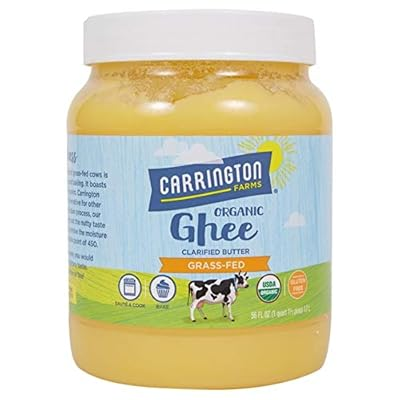
Plastic Containers (HDPE, PET
Food-grade plastics are a popular choice for ghee packaging. Polyethylene terephthalate (PET) and high-density polyethylene (HDPE) are favored for their lightweight nature, cost-effectiveness for transport, and durability. Particularly, PET has excellent barrier properties, low weight, and a reasonable price. Ensure that the plastic used to package your product does not react with the ghee.
Flexible Pouches
As the world edges closer to sustainability, so has the demand for eco-friendly packaging risen. Flexible pouches are used for smaller quantities and consist of multiple layers of materials like plastic and aluminum foil. They are generally cheaper than rigid packages, and features such as spouts make them portable and easier to use for consumers.
The Machines Used for Ghee Packing
Ghee Filling Machines
These machines are designed to accurately and efficiently dispense the desired amount of ghee into the containers. The two major types are:
- Piston Filling Machines: These machines use a piston to draw a precise volume of ghee from a hopper and then dispense it into the container. They may be used for liquid and semi-solid ghee, as they can handle a wide range of container sizes.
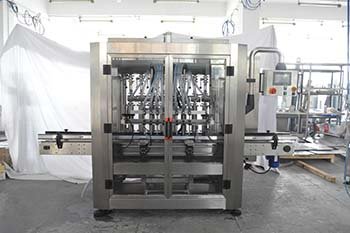
- Rotary Filling Machines: If you run a high-speed production line, rotary fillers are better suited. They have multiple filling nozzles arranged on a rotating carousel that pick up containers, fill them, and release them onto the conveyor. This work process allows for very high throughputs, making it ideal for large-scale ghee production.
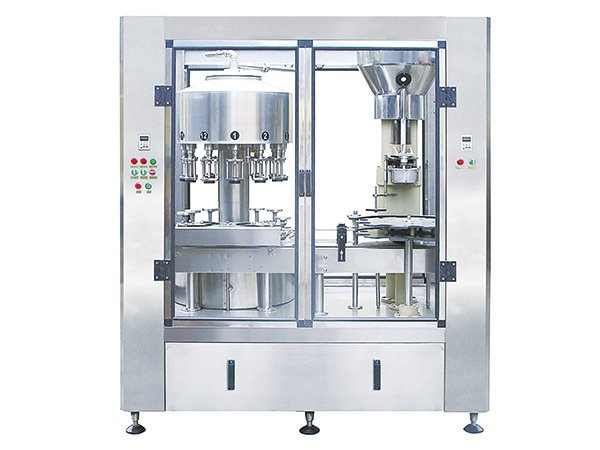
Capping & Sealing Machines
Once filled, the packaging is passed through either a sealing or a capping mechanism to preserve its freshness. These machines may be:
- Cappers: These machines apply and tighten various types of caps onto containers, such as screw caps for glass jars or plastic bottles.
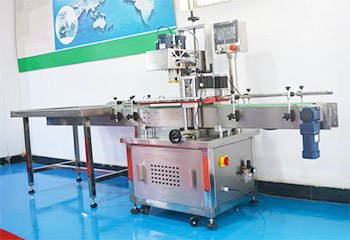
- Tin Seamers: Specifically designed for tin cans, these machines create a hermetic (airtight) seal by crimping the lid onto the can body.
- Pouch Sealers: These machines can employ heat sealing, impulse sealing, or ultrasonic sealing technologies to close the open end of the pouch after filling.
Labeling Machines
These machines facilitate the final steps in the ghee packaging process. Labeling machines apply pre-printed labels with product information, branding, etc., to the filled and sealed ghee containers.
Coding Machines
Coding machines are used to print variable data directly onto the packaging, such as batch numbers, manufacturing dates, expiration dates, and sometimes QR codes.
Support Machines
Conveyor belts, ghee melting/holding tanks, and cleaning systems are machines that play a crucial role in the overall efficiency and hygiene of the ghee packing line.
Our Solutions
Despite its distinct properties, you can successfully package your ghee product by leveraging the systematic packing process, materials, and machinery highlighted in this article. Choosing the right packaging machine will determine how well your ghee is preserved, the customer’s perception, and your sales volume.
Guangdong Sembsun Packaging Machinery Co., Ltd. offers an array of ghee packaging machinery tailored to your needs.


